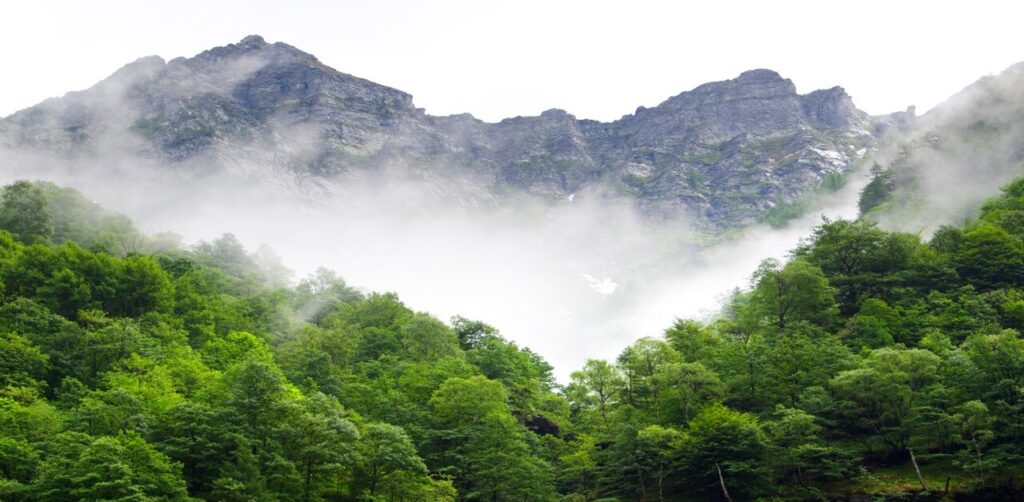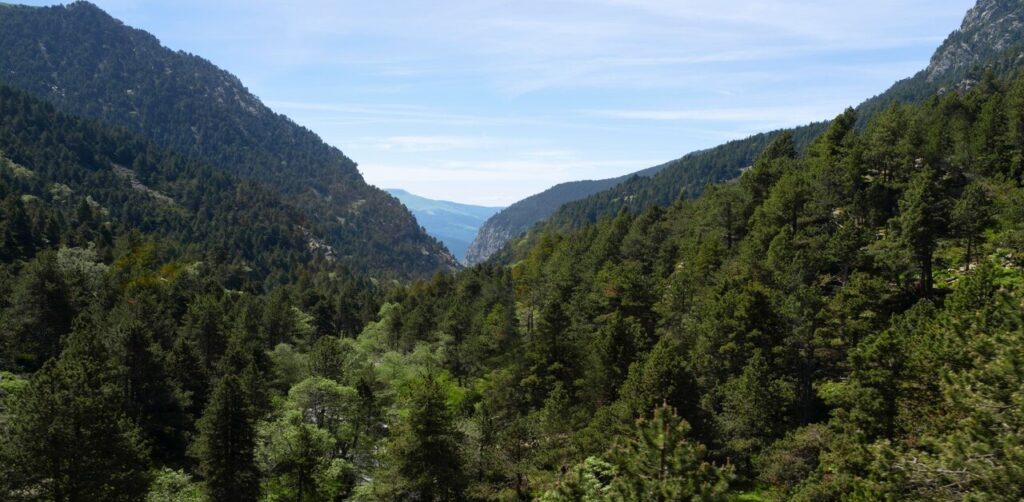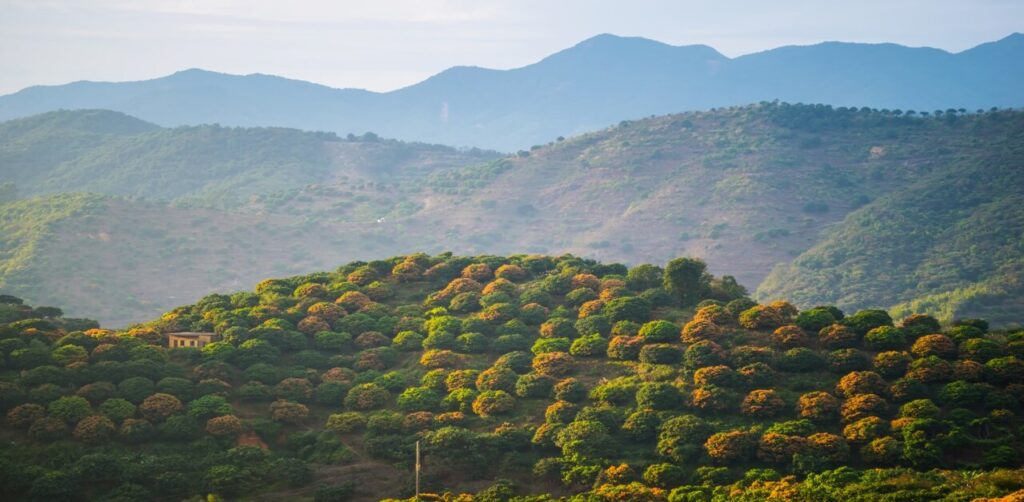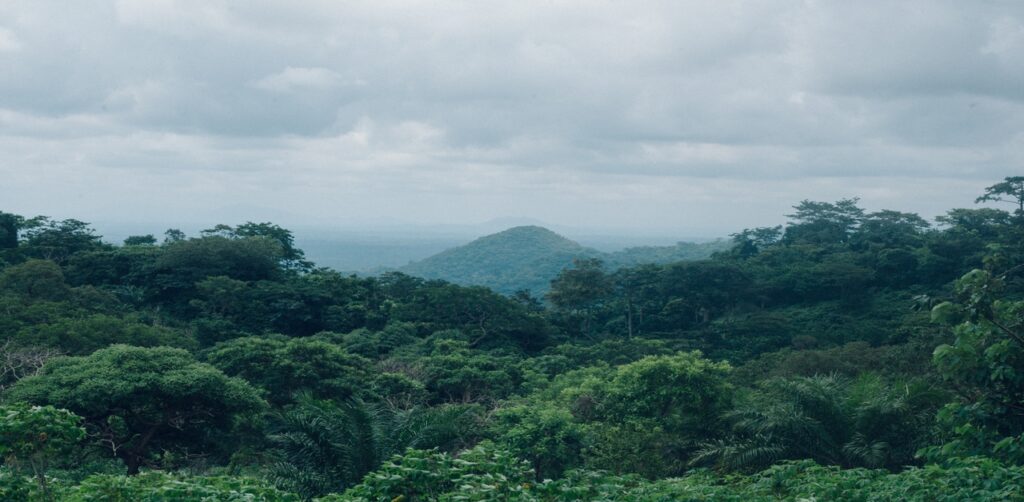Montane forests are among the most interesting ecosystems in hilly and mountainous areas of the world. These forests, as the name implies, occur in mountainous terrain, typically with elevations between 1,000 meters and 3,500 meters above sea level.
These areas have a unique geography, climate, and altitude that give them a unique environment, enabling a rich variety of flora and fauna. Montane forests have a vital role in conserving biodiversity, regulating water flow, and acting as a natural check against soil erosion.
In India, these forests are located mostly in the Himalayas, Western Ghats, and Nilgiris.
They are found globally in tropical and temperate mountainous areas, including the Andes in South America, the Rockies in North America, and some parts of East Africa.
The most remarkable aspect about these forests is their stratified nature that varies with the altitude, creating an abundant diversity of plants and animals.
In this article, we discuss Montane forest features, distribution, plant and animal life, ecological significance, threats, and conservation of montane forests.
Table of Contents
Characteristics of Montane Forests
These forests are characterized by some unique features, which make them stand out among other types of forests:
1. Vegetation depending on the altitude: Vegetation changes with the altitude. Plants on lower slopes can be tropical or subtropical, while higher areas are characterized by conifers, mosses, and lichens.
2. Cool and damp climate: The climate is comparatively cooler with heavy rainfall, especially on the windward side, owing to high elevation.
3. Dense canopy: These forests are typically thickly covered with canopies, which block much sunlight to the forest floor, resulting in shady and wet conditions.
4. Soil properties: The soils are typically shallow, acidic, and organic-rich, yet erodible because of steep slopes.
5. Cloud cover: In tropical climates, montane forests are commonly referred to as cloud forests due to the constant presence of mist covering the forest, thereby keeping the air humid.

Distribution of Montane Forests
These forests are common all over the world and vary in structure based on their latitude and altitude:
1. Tropical Montane Forests: These are located in equatorial areas like the Andes and Central America, as well as some areas of Southeast Asia.
Tropical montane forests are located in the Western Ghats and in the northeastern states of India.
2. Temperate Montane Forests: They are found in the mid-latitude areas, where most of them are made up of conifers such as pines, firs, and spruces. The Himalayan region is a good example.
3. Alpine Forests: These forests are replaced by alpine meadows and shrubs, further up, whose only survivors are mosses and lichens.
In India, montane forests are categorized into:
1. Tropical Montane Wet Temperate Forests: Occur at the Nilgiris, the Annamalai Hills, and in the Western Ghats.
2. Subtropical Pine Forests: located in the lower Himalayan ranges.
3. Himalayan Temperate Forests: Grow within Himachal Pradesh, Uttarakhand, and on the elevated regions of Jammu and Kashmir.
Flora of Montane Forests
The plants of these types of forests are most varied and vary with the altitude:
1. Lower Montane Slopes: Abundant in broad-leafed evergreen trees, which include oaks, laurels, magnolias, and chestnuts.
2. Middle Elevations: Mixed forests containing conifers such as pine, deodar, fir, spruce, and species with broad leaves.
3. Greater Heights: Dominated by conifers and alpine shrubs. Epiphytes, ferns, mosses, and lichens are plentiful as the humidity is great.
4. Western Ghats and Nilgiris: This is the land of shola forests sprinkled with grasslands and trees such as rhododendrons, magnolias, and cinnamon.
If you want to buy a bag for your school or college life, then you should visit here.

Fauna of Montane Forests
These forests are home to numerous animal species, of which many are rare and endangered.
1. Mammals: Snow leopard, Himalayan tahr, red panda, musk deer, black bear, and langurs live in the Himalayan montane forests.
The species found in the Western Ghats include lion-tailed macaque, Nilgiri tahr, and Malabar civet.
2. Birds: Pheasants, tragopans, hornbills, and many migratory birds are also found in these forests.
Here can be found the Himalayan monal, the national bird of Uttarakhand.
3. Reptiles and Amphibians: Montane forests in the Western Ghats are home to numerous endemic frogs and reptiles because these ecosystems are isolated.
4. Insects: Butterflies, moths, and other insects thrive in the damp climate and serve important purposes in the pollination process.
Ecological Importance of Montane Forests
Montane forests are not mere landscape elements, but offer a myriad of ecological services:
1. Biodiversity hotspots: They also contain many endemic species and endangered species that can only be found here and are therefore very important to the biodiversity of the world.
2. Watershed protection: Montane forests stabilize the water flow of rivers and streams, which, by definition, supply plains with water.
3. Climate control: These trees are carbon sinks. They absorb carbon dioxide and minimize the effects of climate change.
4. Soil conservation: Trees cover the soil, stabilizing the slopes and reducing landslides and soil erosion.
5. Cultural and economic importance: Montane forests have been a source of food, fuel, timber, and even medicine to many indigenous people.
6. Tourism/Recreation: Mountain forests also play host to trekkers, bird watchers, and nature lovers who contribute to the local economies.
If you want to read an article about tropical thorn forests, then you can click on it.

Threats to Montane Forests
Though montane forests are considered to have high ecological importance, they are threatened by several factors:
1. Deforestation: Agriculture, road construction, and timbering lead to a decline in the forests.
2. Climate change: Rising temperatures are pushing vegetation belts further north, and endangering species that are regionally adapted to cooler temperatures.
3. Overgrazing: Grazing of livestock in montane grasslands causes damage to natural vegetation and their regeneration is inhibited.
4. Forest fires: The natural and man-made fires lead to serious destruction of biodiversity.
5. Invasive species: The introduction of new exotic plants and animals interferes with natural ecosystems.
6. Pressure of urbanization and tourist roads: Development in the mountainous areas disrupts wildlife habitats.
Conservation of Montane Forests
Preservation of the Montane forest is important to the ecological balance and the good of humankind.
Among some key conservation measures:
1. Protected areas: Forming national parks, wildlife reserves, and biosphere reserves in mountainous areas (e.g., Nanda Devi Biosphere Reserve, Silent Valley National Park).
2. Afforestation and reforestation: Planting native species to rehabilitate degraded forests.
3. Participation of the communities: The participation of communities in forest management will help to use the resources sustainably.
4. Wildlife corridors: Keeping the isolated areas connected to facilitate movement.
5. Eco-tourism: It encourages responsible tourism to earn revenue at the expense of the ecosystems.
6. Research and monitoring: Ongoing monitoring of montane ecosystems to learn more about the effects of changes in climate and changes in biodiversity.

Conclusion
Montane forests are the most valuable gift of nature, not only beautiful, but also providing ecological balance, regulating water sources, and a home to millions of species.
These forests also show us the interdependence of life, how the health and life of the people in remote plains are affected by the ecosystems of high mountains.
There is, however, a serious threat to their survival due to increased human activities and climate change. Not only the forests and wildlife of the mountains, but also the future of humanity in general, are preserved by conserving montane forests.
Through proper conservation and promoting awareness and sustainable practices, we can make certain that montane forests can survive for generations to come. They are not just mountains and forests, but streams to the ecological well-being of our planet.

